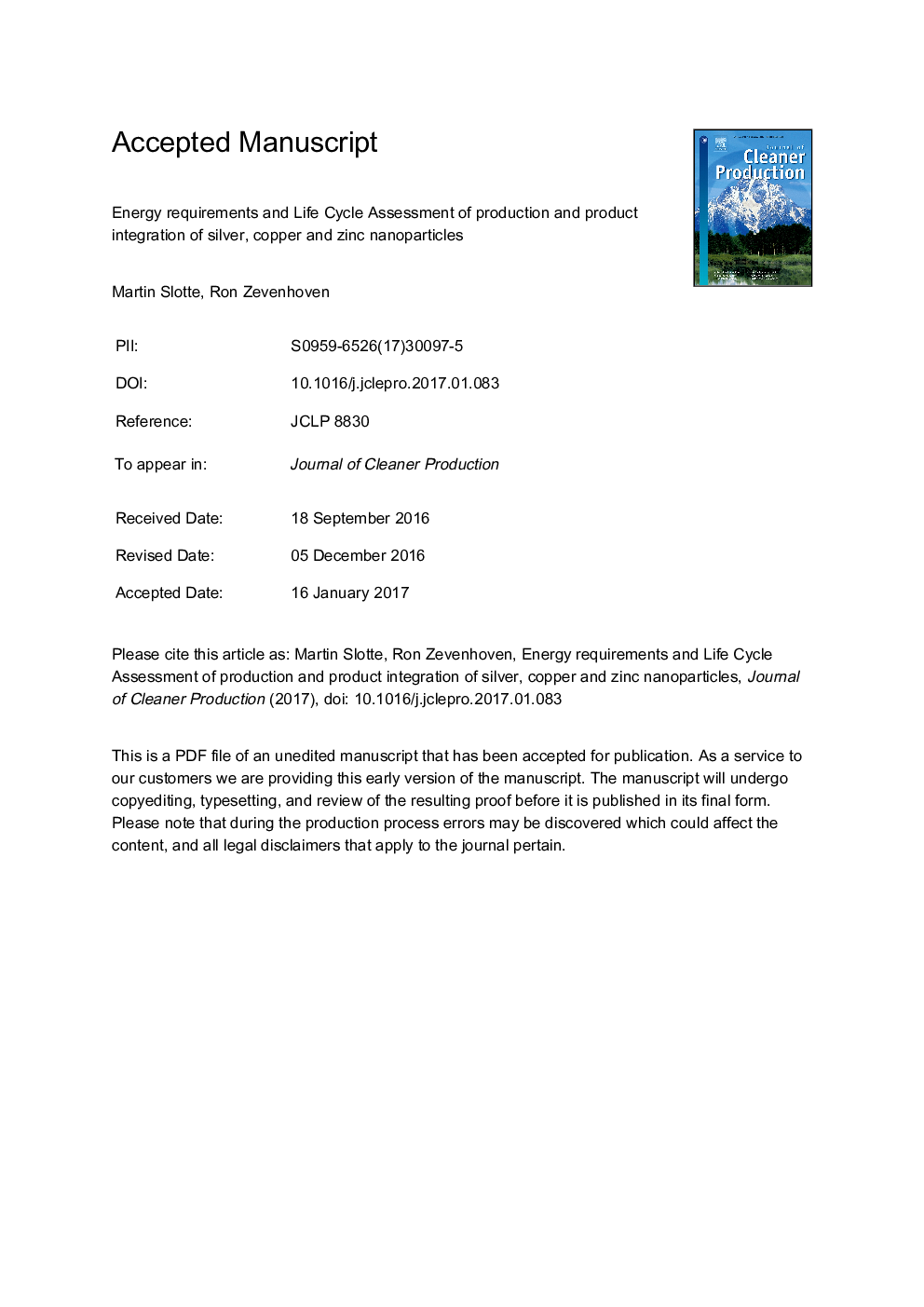| کد مقاله | کد نشریه | سال انتشار | مقاله انگلیسی | نسخه تمام متن |
|---|---|---|---|---|
| 5480253 | 1522105 | 2017 | 29 صفحه PDF | دانلود رایگان |
عنوان انگلیسی مقاله ISI
Energy requirements and life cycle assessment of production and product integration of silver, copper and zinc nanoparticles
ترجمه فارسی عنوان
الزامات انرژی و ارزیابی چرخه زندگی تولید و ترکیب محصول نانوذرات نقره، مس و روی
دانلود مقاله + سفارش ترجمه
دانلود مقاله ISI انگلیسی
رایگان برای ایرانیان
کلمات کلیدی
موضوعات مرتبط
مهندسی و علوم پایه
مهندسی انرژی
انرژی های تجدید پذیر، توسعه پایدار و محیط زیست
چکیده انگلیسی
The increased knowledge of metallic nanoparticle properties and production routes has raised the interest in large-scale nanoparticle production and integration into products. The goal of this paper is to evaluate the environmental impact of nanoparticle production using the arc/spark method compared to production of the metal itself and to evaluate the life cycle impact breakdown of the production of nanoparticle containing products. Nanometal-containing products with market potential were identified and three were chosen for assessment of their environmental impact using life cycle analysis. The three products were: nanoparticle zinc in polypropylene composite, copper nanoparticles in cooling water, and silver nanoparticles in textiles, respectively. The product case studies were based on previously made life cycle models for the production of the chosen metallic nanoparticles and then expanded to include the nanoparticle integration. Commercial SimaPro 7.3 software was applied using the Ecoinvent v2.2 database, besides supporting information from open literature. Energy input requirements as determined by the EU FP7 BUONAPART-E project partners are also reported and compared in this study. The specific electricity consumption for the nanoparticle production was: 0.63-0.99Â kWh/g nanoparticle for silver, 0.13-0.28Â kWh/g nanoparticle for copper and 0.016-0.029Â kWh/g nanoparticle zinc with arc processes. For zinc nanoparticle in polypropylene the life cycle indicator contribution of zinc nanoparticle became significant at mass fractions >1 %-wt, for copper nanoparticle in cooling water the use of electricity for nanoparticle production gave the main impact, while for silver nanoparticle used in textiles the concentration of silver was so low that its life cycle indicator contribution was limited to a few percentage points compared to that for the textile. Analysis of the life cycle indicator results for the three nanoparticle metals used in product applications showed that the weight fraction of nanoparticle used in the products largely determined the energy input needed and environmental footprint. In the future, when sufficient input data becomes available the life cycle indicator study boundaries should be extended to include both the use and end of life phases for the products studied in this paper.
ناشر
Database: Elsevier - ScienceDirect (ساینس دایرکت)
Journal: Journal of Cleaner Production - Volume 148, 1 April 2017, Pages 948-957
Journal: Journal of Cleaner Production - Volume 148, 1 April 2017, Pages 948-957
نویسندگان
Martin Slotte, Ron Zevenhoven,
